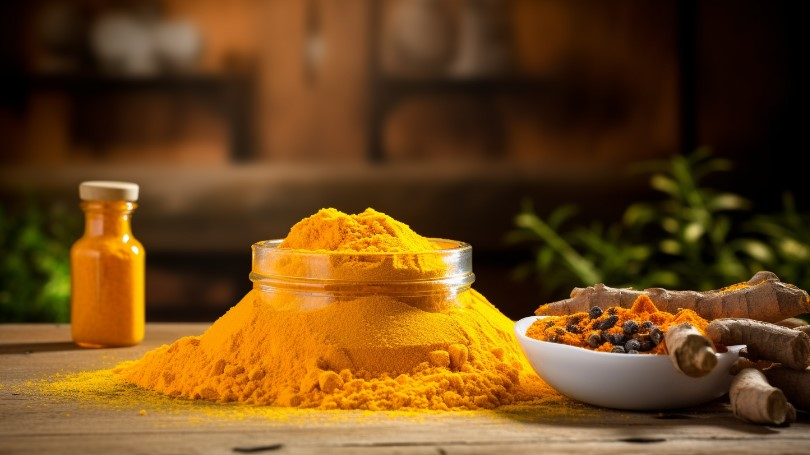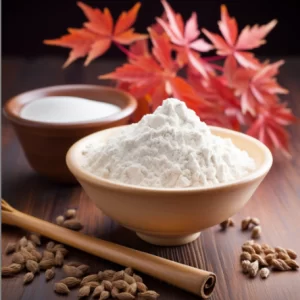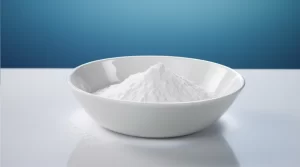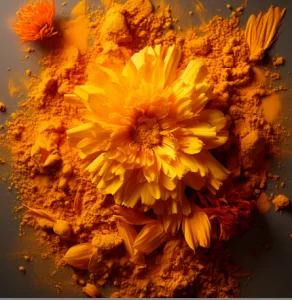Kurkumin secara signifikan dapat memperbaiki penurunan kognitif yang disebabkan oleh penuaan

Jahe memiliki aroma dan rasa yang kuat, sementara kunyit lebih lembut. Alasan mengapa kari yang biasa kita makan berwarna kuning adalah karena kari ini mengandung banyak bubuk kunyit yang dikeringkan dan ditumbuk.
Seperti namanya, Kurkumin adalah zat yang diekstrak dari kunyit, yang juga berwarna oranye dan memiliki aktivitas antioksidan tertentu. Pada tahun 2022, para peneliti di Autonomous University of Puebla di Meksiko menemukan bahwa kurkumin meningkatkan kesehatan sel saraf pada tikus yang lebih tua, membantu memerangi penurunan kognitif yang berkaitan dengan usia. Hasil penelitian ini dipublikasikan pada bulan Maret di tahun yang sama dalam Journal of Neuroanatomy.
Dalam percobaan tersebut, para peneliti mencampurkan kurkumin dalam pelarut agar-agar dan memberikannya kepada tikus melalui suntikan intraperitoneal. Dua belas tikus jantan tua yang sehat disuntik lima kali seminggu dengan dosis 20mg / kg (setara dengan sekitar 90mg per suntikan pada manusia) selama 2 bulan; Kelompok kontrol yang terdiri dari 12 tikus menerima jumlah pelarut kosong yang sama.
Mereka menemukan bahwa tikus yang diberi suplemen kurkumin memiliki kemampuan kognitif yang lebih baik. Dalam sebuah tes yang disebut labirin air Morris, tikus harus menggunakan kognisi spasial dan memori untuk menemukan platform pendaratan bawah air yang tersembunyi secepat mungkin, dan tikus tua yang disuntik dengan kurkumin menghabiskan lebih sedikit waktu daripada kelompok kontrol.
Namun, ketika para peneliti melihat bagaimana kurkumin mempengaruhi otak tikus, mereka terkejut menemukan bahwa hal itu tidak membalikkan hilangnya sel-sel otak yang terkait dengan penuaan: tidak ada perbedaan yang signifikan dalam jumlah sel di area otak mana pun pada kelompok kurkumin dibandingkan dengan kelompok kontrol.
Meskipun jumlah sel otak tidak bertambah, kurkumin memperbaiki bentuk sel saraf di otak tikus dan meningkatkan kemampuan sel untuk berkomunikasi satu sama lain. Dalam percobaan tersebut, para peneliti menggunakan metode yang disebut "Analisis Sholl" untuk mengukur kepadatan cabang sel saraf. Mereka menempatkan gambar sel saraf di tengah serangkaian lingkaran konsentris, dan kemudian menghitung jumlah titik di mana cabang-cabang sel saraf melintasi lingkaran konsentris. Semakin banyak persimpangan yang ada, semakin banyak cabang sel saraf itu dan semakin baik dalam berinteraksi dengan sel lain.
Hasil penelitian menunjukkan bahwa jumlah cabang sel saraf pada tikus tua yang disuntik dengan kurkumin secara signifikan lebih tinggi dibandingkan dengan kelompok kontrol.
Selain itu, kurkumin meningkatkan kepadatan duri dendritik sel saraf di otak tikus. Duri dendritik adalah benjolan kecil yang tumbuh pada dendrit sel saraf, dan di antara benjolan inilah sel-sel saraf berkomunikasi satu sama lain. Peningkatan kepadatan duri dendritik berarti peningkatan komunikasi antara sel-sel saraf dan oleh karena itu dapat membantu meningkatkan kinerja kognitif pada tikus yang lebih tua.
Selain itu, kurkumin meningkatkan kepadatan duri dendritik sel saraf di otak tikus. Duri dendritik adalah benjolan kecil yang tumbuh pada dendrit sel saraf, dan di antara benjolan inilah sel-sel saraf berkomunikasi satu sama lain. Peningkatan kepadatan duri dendritik berarti peningkatan komunikasi antara sel-sel saraf dan oleh karena itu dapat membantu meningkatkan kinerja kognitif pada tikus yang lebih tua.
Secara keseluruhan, penelitian ini menemukan bahwa kurkumin dapat meningkatkan kesehatan sel-sel saraf di otak tikus tua dan meningkatkan komunikasi di antara mereka, sehingga menghasilkan kemampuan kognitif yang lebih baik pada tikus tua. Seiring dengan penelitian yang terus diperdalam, kurkumin dapat digunakan sebagai tambahan di masa depan untuk membantu manusia memerangi penurunan kognitif yang berkaitan dengan usia dan mempertahankan pikiran yang jernih di usia tua.
Produsen kurkumin Produsen Kurkumin / Pemasok Bubuk Kurkumin / Pemasok Kurkumin / Pabrik Kurkumin ::: :
Telepon: +86 (029) 8187 2325
Email: [email protected]
Referensi:
1. Gonzalez-Granillo, AE, Gnecco, D., Diaz, A., Garces-Ramirez, L., de la Cruz, F., Juarez, I., Morales-Medina, JC, & Flores, G. (2022). Kurkumin menginduksi pembentukan kembali neuron kortiko-hipokampus dan peningkatan memori pada tikus yang sudah tua. Jurnal Neuroanatomi Kimia, 121, 102091. https://doi.org/10.1016/j.jchemneu.2022.102091



